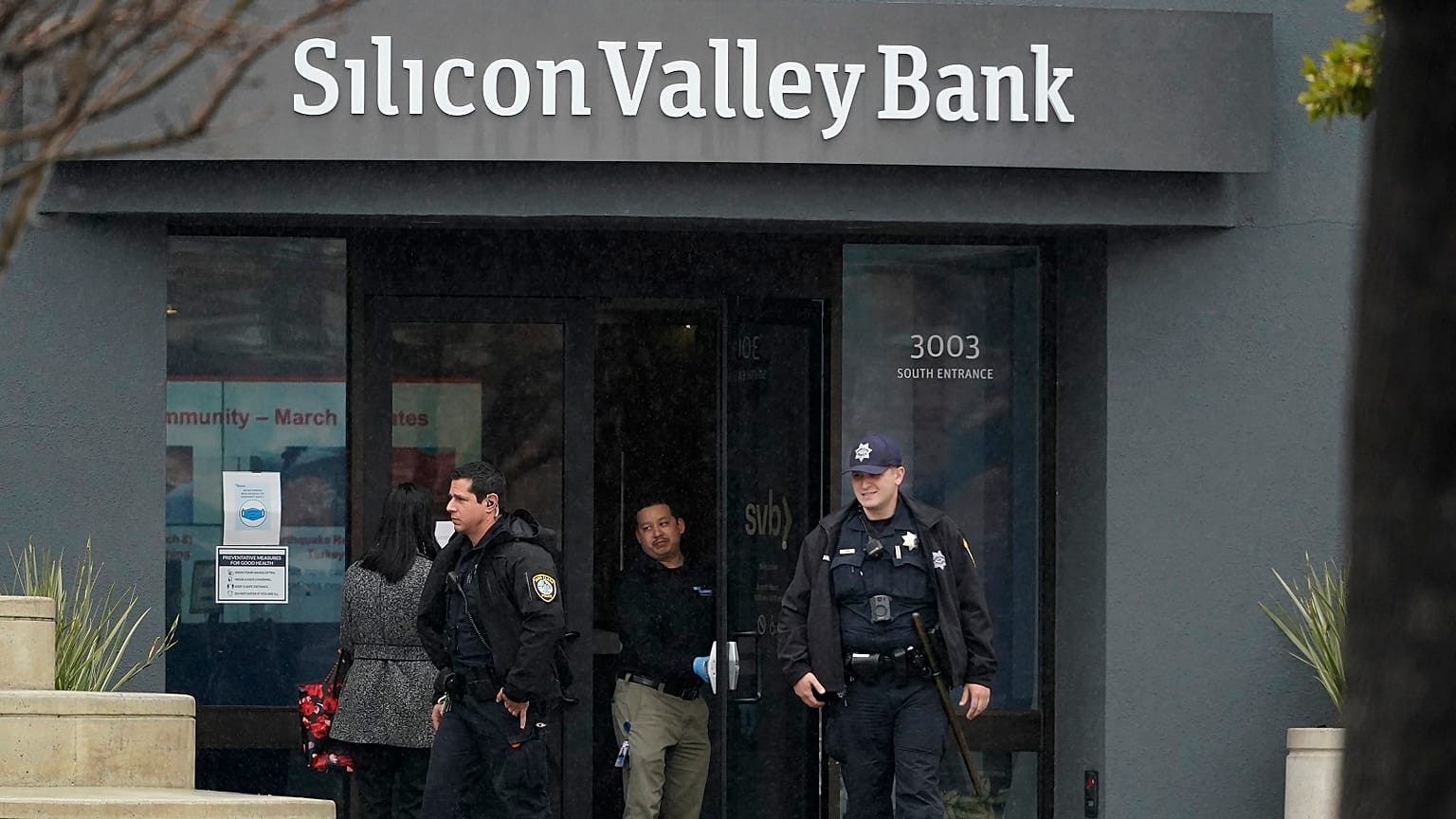The US, and the technology sector which were among its biggest customers, face another Lehman Brothers moment with the failure of SVB.
US regulators rushed to seize the assets of Silicon Valley Bank (SVB) on Friday after a run on the bank, the largest failure of a financial institution since the height of the financial crisis more than a decade ago.
Silicon Valley, the country's 16th largest bank, failed after depositors - mostly technology workers and venture capital-backed companies - hurried to withdraw their money this week as anxiety over the bank’s situation spread.
The bank could no longer cope with the massive withdrawals of its customers and its last attempts to raise new money did not succeed.
US authorities therefore officially took possession of the bank and entrusted its management to the U.S. agency responsible for guaranteeing deposits, the Federal Deposit Insurance Corporation (FDIC).
Little known to the general public, SVB had specialised in financing start-ups and had become one of the largest banks in the US by asset size: at the end of 2022, it had $209 billion (€196 billion) in assets and about $175.4 billion (€164.5 billion) in deposits.
Anxiety growing among tech workers
Its demise represents not only the largest bank failure since that of Washington Mutual in 2008, but also the second-largest failure of a retail bank in the United States.
US Treasury Secretary Janet Yellen called several financial sector regulators together on Friday to discuss the situation, reminding them that she had "full confidence" in their ability to take appropriate action and that the banking sector remained "resilient".
Outside the bank's Santa Clara headquarters in California on Friday, a few nervous customers wondered how they could access their funds, some trying to guess what was going on through the closed glass doors.
On the front, an FDIC piece of paper said they could, starting Monday, withdraw up to $250,000 (€235,000).
"This is not good. A lot of the bigger [venture capitalists] have very high deposits here," remarked one customer who did not wish to give his name. A start-up boss, he used the bank to pay his employees and is worried about them.
On the markets, the panic movement started on Thursday, after SVB announced that it was seeking to raise capital quickly to cope with the massive withdrawals of its customers, without succeeding and having sold for $21 billion (€19.7 billion) of financial securities, losing $1.8 billion (€1.7 billion) in the process.
The announcement surprised investors and rekindled fears about the soundness of the entire banking sector, especially with the rapid rise in interest rates, which is lowering the value of bonds in their portfolios and increasing the cost of credit.
The four largest US banks lost $52 billion (€49 billion) on the stock market on Thursday and in their wake, Asian and then European banks floundered.
SVB failure: Ripple effect outside the US?
In Paris, Société Générale lost 4.49 per cent, BNP Paribas 3.82 per cent and Crédit Agricole 2.48 per cent. Elsewhere in Europe, the German bank Deutsche Bank dropped 7.35 per cent, the British bank Barclays 4.09 per cent and the Swiss UBS 4.53 per cent.
On Wall Street, the big banks recovered Friday after the rout of the previous day: JPMorgan Chase took 2.54 per cent while Bank of America and Citigroup lost less than 1 per cent.
Mid-sized banks or more focused on one type of customer, on the other hand, faced greater in turmoil, with First Republic, for example, dropping nearly 15 per cent and Signature Bank, close to the cryptocurrency scene, dropped 23 per cent.
"As is often the case in finance, the problem didn't come from where we expected," says Alexander Yokum of CFRA.
"A lot of observers were wondering about the debt piling up on credit cards or in the office real estate market. A bank run was not expected," a chain reaction that begins with massive customer withdrawals, he told AFP.
Stephen Innes, an analyst at SPI Asset Management, is reassuring, estimating "low", in a note, the risk of "a capital or liquidity incident among major banks".
Since the financial crisis of 2008/2009 and the collapse of the American bank Lehman Brothers, banks have had to provide their national and European regulators with reinforced proof of solidity.
For example, they must justify a higher minimum level of capital to absorb any losses.
For Morgan Stanley analysts, "the funding pressures facing the SVB are very unique" and other banks are not facing a "liquidity crunch".


















